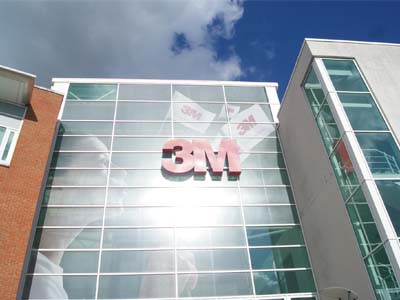3M hosted EFIA’s seminar for packaging printing
Held at the 3M offices in Bracknell, Berkshire, EFIA and ThePackHub hosted the Printing for brand packaging conference on 8 September with a mixture of brands, printers and technology suppliers filling the programme. By Michal Lodej.
With over 55,000 different products, 3M is as innovative as a company can be so its modern facilities were a perfect setting for inspiring the seminar attendees. To spur on this inspiration Karen Graley, manager packaging and reprographics at Waitrose, was on hand to give a view on packaging from the brand perspective, speaking about the supermarket’s new premium food brand, the Waitrose One range.
Ms Graley said, ‘When we came to designing the packaging for our newest brand, it needed to convey the quality of the food selected to be in this premium range, which sources the best ingredients from around the world.’
The brand kept a simple design using subtle colours. The numerical one symbol leads to a simple sketch of the food enclosed, all dawn using just one continuous line, enforcing the ‘one’ theme.
However this design did not come easy and the area where the company struggled most was with colour management. The packaging design used just two colours, Squid Ink and Goose Grey. However, Ms Graley reported that these colours were both very sensitive and even a small shift in tolerance became noticeable. Ms Graley added, ‘This was a very challenging, we want to ensure we meet consistency across the entire brand.’
One way in which to ensure this consistency is to implement the use of press passes. The company currently uses around 35 different print groups, which produce approximately 80% of Waitrose’s packaging. The press passes will introduce a new art work legend and will contain L.A.B values, specify which light the print needs to be viewed in and will require a print tolerance of 2 delta E, a target most would call impossible. However, considering the amount of print groups who will be aiming for this target, the target needs to be small. Even a tolerance of 4 delta E would be impossible, but as long as every printer is gunning for that precise target, the end result should be, seamless and consistent packaging across all different products of the brand. The supermarket will implement this press pass system in early 2017.
Keeping inline
The rest of the seminar programme was surprisingly dominated by digital printing technology. Prime Group’s owner, Jon Tolley, spoke about the power of personalisation. The HP-technology user’s presentation was followed by a presentation from Oana Manolache, HP’s UK and Ireland marketing manager, before another HP-technology user, Ultimate Group’s owner Chris Tonge, spoke about how his company has used digital printing technology.
However, just as digital was once the disruptive technology, attendees were told about a new technology on the scene which could disrupt the disruptors.
Mark Naples, Datalase’s vice president of Business Development, told guests about the company’s inline digital printing system. The technology works with a laser reactive colour changing pigment and is already in use for product coding, case coding, labelling and mailing applications.
The pigment is applied to the substrate in the form of a coating, just as a varnish would be, and then with the use of a laser can be transformed to read anything the manufacturer wants. Mr Naples said, ‘This technology lets you add a late stage differentiation delivery as far down as possible in the supply chain. It puts a digital solution on conventionally printed packaging where it makes most value to the brand, all the way up to the point of sale. That’s the point where inline digital printing plays its part.’
Although it is referred to as inline digital printing, it really does not fit into the traditional sense of printing. There is no ink and there is no printhead and yet it relies on a conventional press to apply the coating to a substrate. It eliminates most consumables needed, ensures operational efficiencies and minimal preventative services as lasers have no moving parts so there are no unscheduled downtimes. At the moment the systems currently installed are working in monochrome, however the company has said that next year will see the release of a full colour version.






